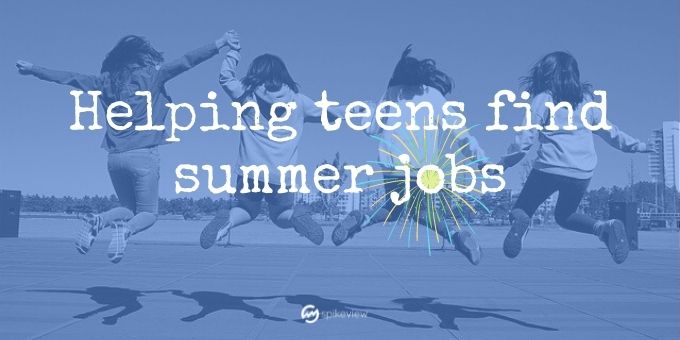How spikeview is helping teenagers find summer jobs during COVID
An astonishing number of underserved high schoolers are looking for skills training during COVID. They’re turning to workforce development nonprofits for support, but the nonprofits are stretched thin leading programs for the community. Time is of the essence for teenagers to find local job connections.

83% of employers struggle to find the right candidates for job openings, according to the Society of Human Resources Managers. It’s hard work finding the right employees in a young workforce. Employers are spending extraordinary time sifting through cookiecutter resumes and form letters.
At the same time, many underserved high school students are struggling to help their households make ends meet. Finding work aligned with their skills is urgent.
Higher Ground partnered with spikeview to solve this challenge. They offer workforce development and other services for Oakland, CA communities.
“Higher Ground coordinates education and workforce development programs for young people in the greater East Bay. We’ve got so much going on, so having an online hub that connects our neighbors with job opportunities is a must.
We partner with spikeview because their platform makes it easy for employers to get to know people on a personal level. For many in our community, this is the first paid job they’ve ever had. It’s inspiring to see these workforce connections being made.”
Khariyyah Shabazz, Workforce Development Director, Higher Ground

Teenagers are competing with other teens and adults for job openings. Using spikeview, a teen’s ordinary life experiences and new skills training are catalogued and transformed into visual stories. Employers are able to immediately see hard and soft skills demonstrated with the click of a single link. This is a huge advantage for young people.
In Oakland, a high school student gets trained by Higher Ground, adds the new skills and interests to their spikeview, then gets connected to people offering paid jobs. The interactive portfolio format organizes personal interests, experiences, and achievements in a variety of storytelling formats.
Thomas Loera is a high school senior who shared his success story with ABC News. After tracking his experiences and awards, Thomas shared his spikeview with a college admissions board and was accepted into San Francisco State University.

LinkedIn’s Global Talent Trends Report revealed 92% of organizations say soft skills matter most when hiring. These don’t show up on a standard form or resume. With spikeview, a young person’s full narrative is presented in their own voice, infused with their own personality. In other words, spikeview makes it easy for employers to find teenagers for remote or local job opportunities.
Hiring managers don’t have time to scour the internet to learn about job candidates after skimming piles of resumes. Instead, their first contact with job applicants can be a portfolio demonstrating the type of person they are to work with and what others have to say about them. Everything an employer needs to know about the person behind the paperwork is all in one easy spot.
A spikeview portfolio is a powerful (and free!) tool for workforce development. It’s a dream come true to strengthen the local economy.
Higher Ground partnered with spikeview to empower young people and help connect them to paid jobs aligned with their skills and interests. The best part about the Higher Ground story is that you can copy their success: Have your teenage workforce create and share their spikeview. It’s that easy to connect reskilled young adults into the community workforce.

